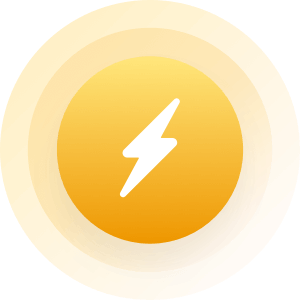| Topic: Solar Impulse 2: Plane makes inaugural flight | |
|---|---|
|
Solar Impulse 2: Plane makes inaugural flight By Jonathan Amos Science correspondent, BBC News 2 June 2014 From the section Science & Environment http://www.bbc.com/news/science-environment-27659068 A solar-powered plane that will be taken on a round-the-world journey in 2015 has made its inaugural flight. The Solar Impulse 2 vehicle lifted off from Payerne airfield in Switzerland at just after 03:35 GMT (04:35 BST; 05:35 CEST), returning two hours later. It is a larger, upgraded version of the aircraft that flew across America last year with adventurers Bertrand Piccard and Andre Borschberg at the controls. For this maiden flight, test pilot Markus Scherdel was in the cockpit. He climbed to just under 6,000ft (1,800m), conducting a number of manoeuvres to prove the handling of the aircraft. Mr Scherdel reported some early vibrations, but overall the mission outcome appeared very positive. "The initial results are in line with calculations and simulations," read a later statement from the team. Further flights will be conducted in the coming months in order for the experimental machine to attain certification. "It's a great day for all the team of Solar Impulse," Mr Piccard told BBC News. "An aeroplane like this is absolutely unique. And for the first time in history, we have an aeroplane that is flying with no fuel day and night, showing the incredible potential of the clean technologies - all these technologies that the world can also use in order to reduce the dependency to fossil fuel and to be cleaner and solve a lot of problems of pollution." The carbon-fibre aircraft has a huge wingspan, which at 72m is wider than a Boeing 747 jet. And yet, the vehicle weighs only 2.3 tonnes. The tops of the wings are covered by 17,000 solar cells, which drive four brushless electric motors at speeds of up to 140km/h (90mph). During the day, the solar cells will recharge lithium batteries, which can then be used to keep the plane’s propellers turning through the night. Jet plane Is jet travel becoming the dirtiest way to cross the planet? The first Solar Impulse plane set a number of world records, including the longest manned solar-powered flight at 26 hours, the first inter-continental flight in a solar-powered plane, and the greatest distance covered on a piloted solar-powered flight. (Autonomous solar-powered drones can stay aloft for weeks). That last record was set during Piccard’s and Borschberg’s epic TransAmerica journey in May, June and July last year. But as challenging as that effort was, it will be dwarfed by the difficulty and complexity of completing a global flight. This is because it will have to include passage across the Atlantic and Pacific Oceans. The latter could take all of five days and nights to complete. Only one pilot can fit in the cockpit. It has a reclining seat to make room for exercising and to permit Piccard and Borschberg, whoever is at the controls, to take short catnaps. Jonathan.Amos-INTERNET@bbc.co.uk and follow me on Twitter: @BBCAmos |
|
|
|
|
|
thanks for the video link, an amazing watch.
looks good for spraying fields with: whatever. what if dense clouds pass over? would have to rely on heavy batteries then. Video does not cover this aspect. Now that you've made solar respectable, maybe i should look for a job here. 
|
|
|
|
|
|
What if it disappears like Emilia Hart
 & speaking of her, isn't Malaysian flight MH370 somehow similar to hart's disappearance & speaking of her, isn't Malaysian flight MH370 somehow similar to hart's disappearance 
|
|
|
|
|
|
What if it disappears like Emilia Hart  & speaking of her, isn't Malaysian flight MH370 somehow similar to hart's disappearance & speaking of her, isn't Malaysian flight MH370 somehow similar to hart's disappearance 

the powerful jet / ic engines remain respected. so were powerful steam engines till lighter weight diesel locomotives displaced them. Solar, i wouldn't sneeze on the future. 
|
|
|
|
|
|
thanks for the video link, an amazing watch. looks good for spraying fields with: whatever. what if dense clouds pass over? would have to rely on heavy batteries then. Video does not cover this aspect. Now that you've made solar respectable, maybe i should look for a job here. 
This kind of answers your question for "what happens if dense clouds pass over" http://www.bbc.com/news/science-environment-26955341 Its predecessor, Solar Impulse 1, has already been flown across America, and stored sufficient power in its batteries to fly all night. With a wingspan of 72m (236ft), Solar Impulse 2 is the width of a Boeing 747, but weighs about the same as a large car. Its wings are covered in 18,000 solar cells to convert sunlight into electricity to power its motor and to store in its batteries. Perhaps enough sunlight would still be able to filter through the clouds to power the batteries? |
|
|
|
|
|
The plane is a great achievement in light-weight structures made of carbon fiber and battery/motor tech. However, the article is a little misleading as it implies that the plane can tool along all night on it's charged up batteries. That is not how it actually works.
The plane is largely a powered glider. The solar cells provide enough punch to power the motors sufficiently to make the plane climb up to about 25,000 ft. There is enough left over solar cell capacity to charge the on board batteries. When night comes, the engines power down using some energy but not what is available during the daylight. The plane then glides under a little power and loses altitude all night. By the time the sun comes up, the plane has lost a lot of altitude but with solar cell power it starts to climb again and starts the cycle all over again. The system obviously works much better when daylight hours are more and night hours are less. At maximum altitude the plane can fly over most clouds and around most others. If an extended area of high altitude clouds were expected, I am sure the plane would not stay aloft. |
|
|
|
|









